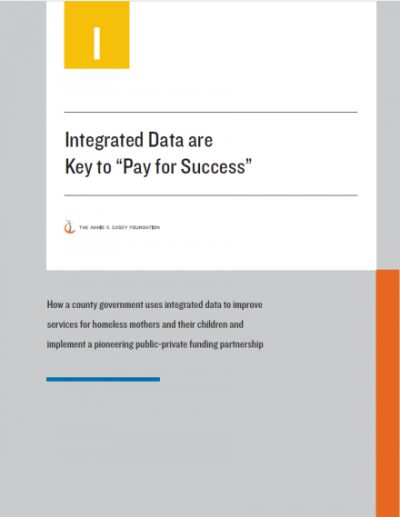Data Match
Matching information about homeless mothers with their children in foster care revealed the size and needs of this vulnerable population.

Cuyahoga County, Ohio, used an integrated data system to improve outcomes for very vulnerable families in a pioneering Pay for Success program. The public-private funding partnership used the IDS to develop a more targeted set of services for the homeless mothers with children in the child welfare system; design a rigorous evaluation to test the effectiveness of the new services; and, estimate the potential savings of the efficient set of services. The investors will be paid from the savings generated by reducing the amount of time homeless children spend in out-of-home care.
Pay for Success programs often involve delivering services and tracking results in ways that cross agency boundaries. Since planning, managing and evaluating these efforts requires information that is collected by various administrative data systems, an IDS that links data from the various systems is critical to developing these systems-efficient, cost-saving programs.
We hope you'll find value in this report. We’d love to get a little information from you, which we'll use to notify you about relevant new resources.